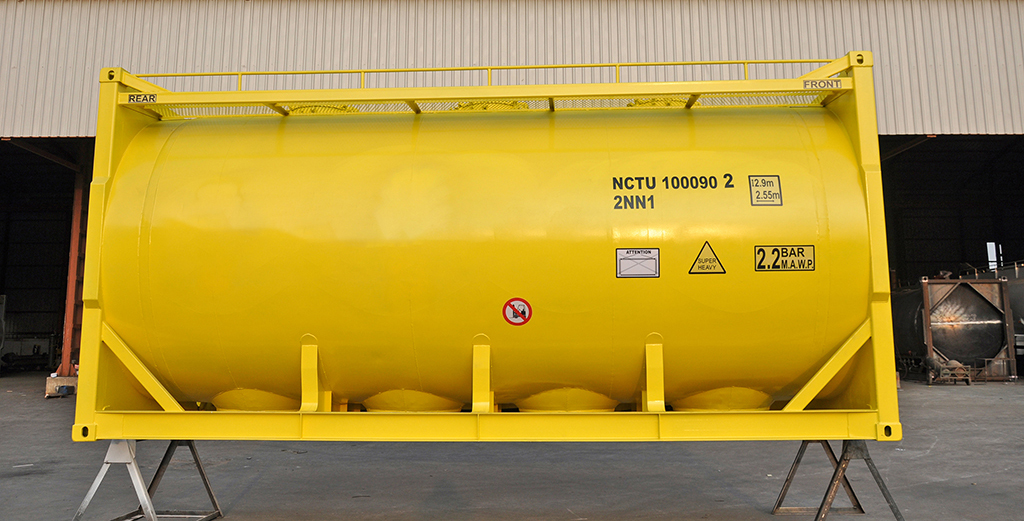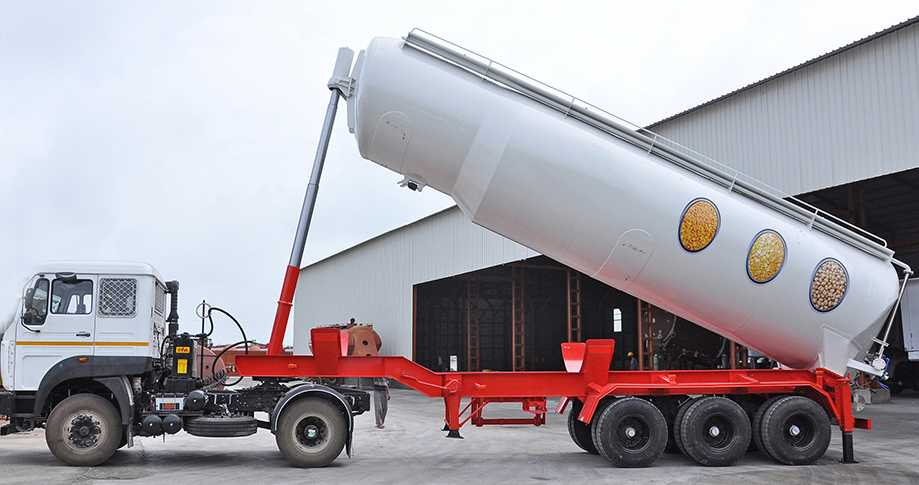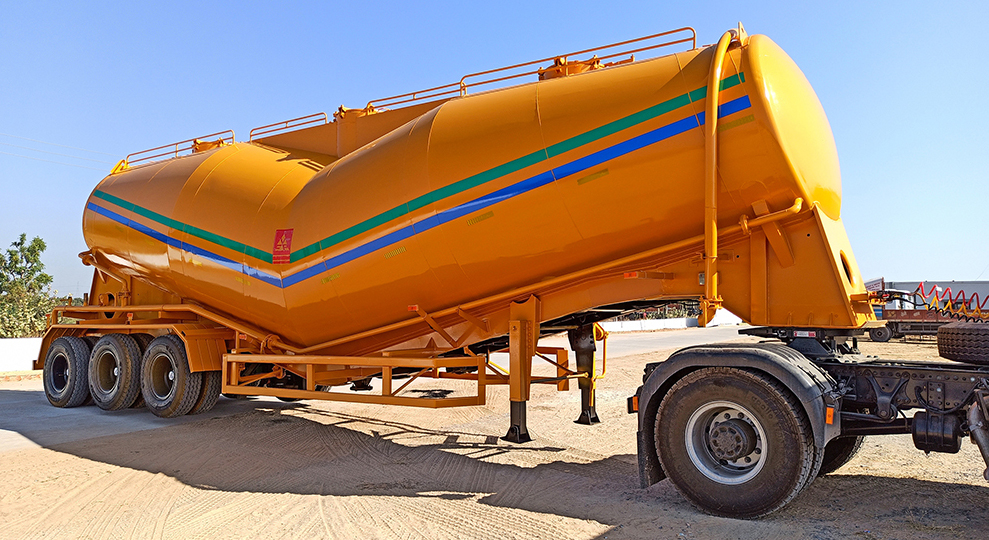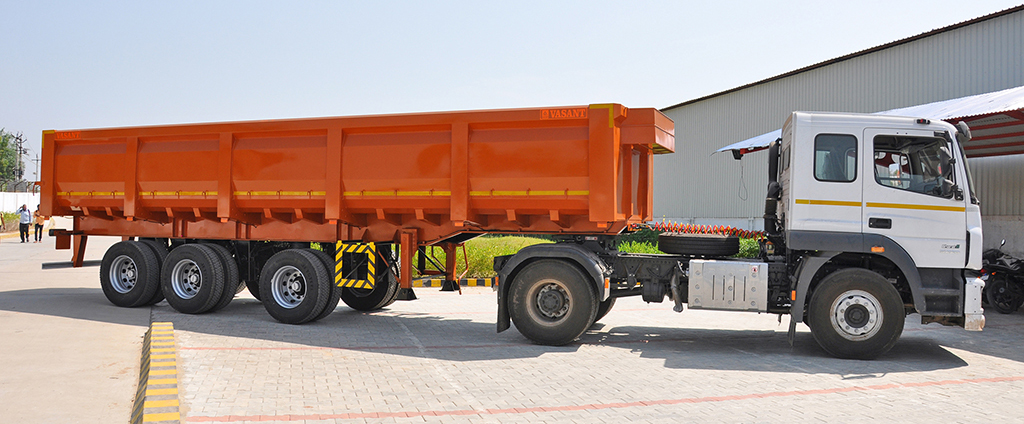
Rajesh Rajgor chats with Nikhil Panchal, Technical Director, Vasant Fabricators (P) Ltd., to learn why his firm believes that manufacturing dry bulk containers would form the majority of their sales revenue and that their competencies will allow them to outperform the competition in the next couple of years
When Prime Minister Narendra Modi flagged off the world’s first double-stack, long-haul container train in January 2021 from New Ateli in Haryana to New Kishanganj in Rajasthan, it not only opened up a huge new market for fast, cost-effective transportation, but it also paved the way for a slew of Indian companies to invest in and manufacture ISO-certified tank containers that can be stacked on a railway rack or semi-bed or flatbed trailer. Vasant Fabricators’ Technical Director Nikhil Panchal vividly recalls the events of the day. “We were blown away by the good news and the possibilities of these containers. We decided to invest in manufacturing dry bulk containers quite immediately.”
As it is, Vasant Fabricators (P) Ltd. (VFPL), a brand to be reckoned with in the truck-trailer business, has proven its mettle by producing specialised heavy bodies on a regular basis. The company that has been making semi-trailers, tipping tankers, bulk liquid tanks, V-shaped, tip or hopper-type bulker and tipping tankers has been keenly observing the demand for dry bulk containers lately. “Companies were migrating from choosing cement bag logistics to transporting loose cement. They had also stopped entertaining overloaded vehicles. These whole new dynamics would lead private operators to invest in dry bulk containers coupled with semi-trailer, flatbed trailers or opt for railway transportation using dry bulk containers,” Panchal points out.

A Win-Win Situation
Companies choosing to opt for dry bulk containers would immensely benefit as they save on cost and time while it also helps in reducing carbon footprint. Elaborates Panchal: “These dry bulk containers can be loaded on to skeleton trailers, railway racks or sent by sea. Cement producers can pour the cement and deliver it over great distances of 600-700 km or more at once, saving money, time and reducing India’s carbon impact. Customers of these cement giants will be pleased as well since they will no longer require logistics handlers to transport cement bags, cut them and then use them. Companies can also stack up to five containers on top of each other.” The benefits of the containers just do not end there. Vasant Fabricators, a master of the pressurised bulker, believes their dry bulk containers are little more than a ‘bulker in a frame’.

“They are weather-resistant and come with a five-year paint warranty. The warranty on the construction quality is for 15 years,” Panchal informs. The best thing about them is the advantage they give customers over Chinese products. Chinese containers have become unaffordable for Indian companies as freight rates have increased. Vasant Fabricators’ weight advantage on these dry bulk containers substantially outweighs those of their Chinese peers. “We provide 42 tonne gross weight containers as opposed to their 32.4 and 36 tonne gross weight containers. Our container has a carrying capacity that is 6-10 tonnes higher than Chinese containers. Furthermore, we are 30-40% more competitive than Chinese competitors,” Panchal says.
Established Competency

“Even though we are still working from our previous facility, we have a dedicated testing jig and have not relied on any other company and have created most of the expertise in-house,” Panchal states. The company is using its existing facilities in Chappi. “Among other things, our work floor has a CNC profile machine, a brief blasting facility and a paint booth. Our facility handles everything from in-house design to simulation software to static and dynamic testing, as well as FE analysis. Apart from third-party obligatory inspections, we have obtained CSC certification for dry bulk containers and ISO – 1496-3 certification,” he adds. Vasant Fabricators appears to be on a roll as evidenced by the fact that they are now working on 90 container orders.
This isn’t all, though. According to Panchal, “Going forward, these dry bulk containers will account for 60-70% of our overall sales. Despite the fact that we started with 90 numbers (one rack can hold 90 numbers), which is the bare minimum for operations, orders will soon be placed in multiples of 90, and we anticipate to roll out 180 to 270 units in the next year.” Yet, Vasant Fabricators will stay devoted to its core skill of manufacturing bulkers, side-bed and tip-trailers despite the company’s evolution into a dry bulk container maker. “We will keep making things in which we are experts and have a technical advantage over the competitors,” Panchal states.

“We are currently producing 25-30 bulkers, 15 side-wall trailers and 15 tip trailers per month. Customers are receiving higher mileage and huge fuel savings thanks to most of the products made of high-tensile steel on BS VI chassis with full air-suspension,” he adds, while speaking about the demand for side-wall and tip trailers from Uttar Pradesh and Rajasthan. The company, which five years ago delved into manufacturing an aluminium tipping bulker that is still operational in Gujarat, now plans to build not only a plant for dry bulk containers but also cryogenic tanks in the future. Obviously upbeat, Panchal states: “LNG and hydrogen will soon become a reality in India, and we should be prepared. We have already begun the process of obtaining PESO accreditation and plan to open the facility in Vadodara.”